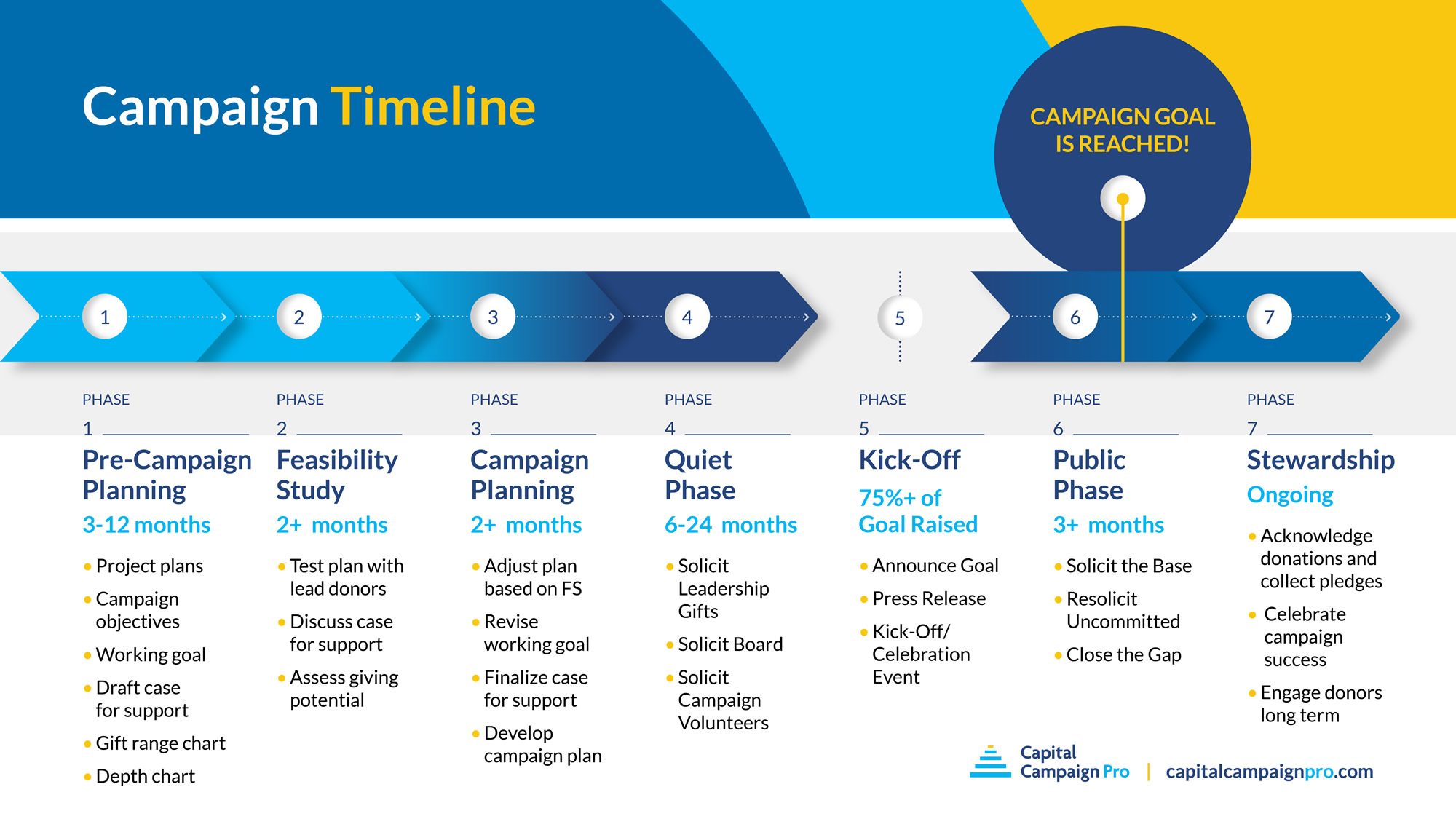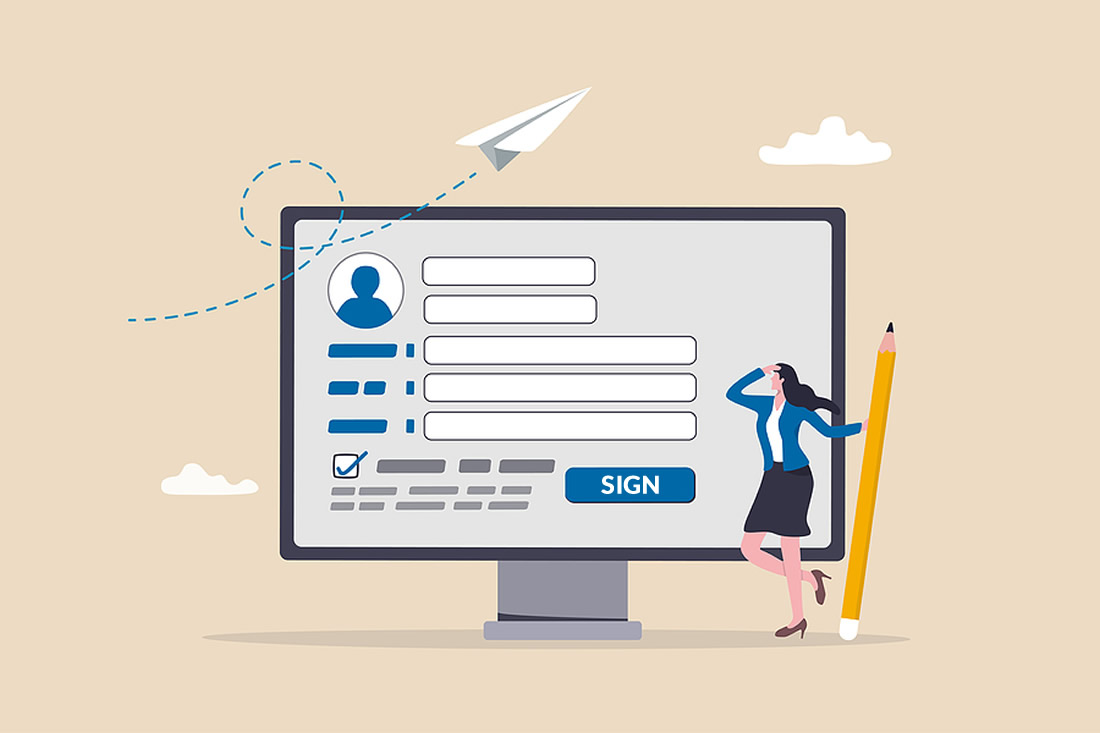Post-Campaign Follow-Through: What You Must Do in the Final Phase

Capital campaigns are like icebergs. Most of the work is invisible. It happens quietly, behind the scenes, long before the campaign becomes public and long after you’ve celebrated success.
In my experience, most campaigns for community-based organizations take at least 15 months and will likely take as long as three years. But however long your campaign takes from the planning to when every gift is collected, the part of the campaign that everyone will remember — the part with all the public hoopla — is likely to take less than 10% of that total time.
Those few months of hoopla and public participation begin at the “Kick-Off” of your campaign and, of course, end when you’ve reached or surpassed your goal and publicize and celebrate your success. That public period usually takes between 3 and 5 months.
But that visible public phase is not the end of your campaign.
An important period of follow-up and follow-through may well take 4-6 months (or more) after the campaign celebration. And though that work is largely invisible, it is at least as important as the earlier phases of your campaign.
The Seven Phases of Your Campaign
You can see in the graphic below that your campaign will fall into seven phases.

The first three phases — pre-campaign planning, feasibility and campaign planning — prepare you for the all-important quiet phase of your campaign. It’s during this period when you will raise 60-70% of your campaign goal from a handful of top donors.
Once you’ve done the planning work and received commitments for the lion’s share of the campaign, you will “kick-off” your campaign. At the Kick-Off, you’ll celebrate the generosity of your donors who have made early commitments to your campaign and you’ll highlight the amount still to be raised to reach your goal.
The practice of kicking off a campaign after a great deal of the money has been raised builds the enthusiasm and confidence. You’ll need to raise the remainder of the campaign from lots of smaller gifts.
Post-Capital Campaign Follow-Through
The part of the campaign that is often overlooked is the final phase — post-campaign follow-through. When follow-through is done well, everyone feels good about their participation in the campaign. But when it’s not done well, relationships that have been built carefully during the campaign are likely to sour.
Poor Campaign Follow-Through — a Personal Story
Last year, I made a campaign gift to an organization whose work I believe in. The ED did a good job of asking me for a gift. And after discussing it with my husband, we gave what, for us, was a generous gift. We got an immediate and lovely thank you.
We felt good about our gift. Until months later when we received a bill for the next installment of our pledge. While I knew we had made a pledge, getting what looked like a tax bill from the organization didn’t feel right. I would have preferred to get a note about the progress of the project with a reminder that our next pledge installment was due. I paid our next installment and got a cold gift receipt.
Then, a few months after that, I learned from a friend that the project we had given to had been completed. We hadn’t received any information about it or an invitation to a ribbon cutting or open house. I was happy the project was complete but I was disappointed that our gift mattered so little that no one in the organization had thought to let us know.
Now, my pledge is fully paid. And the project is complete. I should feel wonderful about having helped make something good happen in my community. My relationship to that organization should be stronger than ever. But instead, I feel sour and when I get the annual request for support this year, I’m not sure I’ll give.
With just a little follow through in the final phase of the campaign, that organization could have solidified their relationship with me. Instead, the way I was treated after making the largest gift I had ever made to that organization eroded the relationship.
Unfortunately, it’s likely that every donor who gave to that organization’s campaign had the experience of not feeling appreciated. And, if that’s the case, I wouldn’t be surprised if their ongoing fundraising dropped off.
Campaign Follow-Through Checklist
Once you’ve celebrated the success of reaching your goal, you have a great deal of important work left to do. You’ll have to:
- Thank your donors (more than once)
- Appreciate and recognize the work of the campaign volunteers
- Appreciate and celebrate the mighty efforts of the staff
- Collect the pledges made to the campaign
- Report to your board and community on the entirety of the campaign
- Tie up every loose end
- Communicate with donors and volunteers about the projects made possible by the campaign
All of that work takes time and energy and attention. In developing the staffing plan for your campaign, make sure that the staff support you have brought on for the earlier phases of the campaign continues to be active right through to the end of that final phase.
Campaign Follow-Through: An Investment in Ongoing Fundraising
You might think about this final follow-up phase of your campaign as an investment in your ongoing fundraising. Provided you do it with care, you’ll be able to strengthen the relationships you’ve built throughout your campaign.
However, if you fail to handle your campaign follow-through carefully — if you fall into the trap of thinking that once you have the money, you can go back to business as usual — you risk undermining your ongoing fundraising efforts.
With that in mind, it’s in your organization’s best interest to pay appropriate attention to this final post-campaign phase. Don’t treat it as a time to rest on your laurels — there’s still work to be done.
How do you keep yourself motivated after the celebration has occurred? If you have tricks and tips, please share them in the comments below.



Leave a Comment